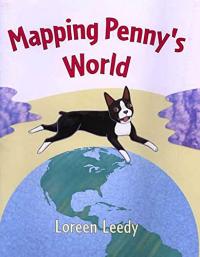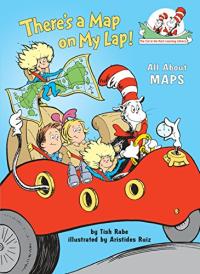Key Information
Focus
When To Use This Strategy
Appropriate Group Size
Why use a concept map?
- It helps children organize new information.
- It helps students to make meaningful connections between the main idea and other information.
- They’re easy to construct and can be used within any content area.
How to use a concept map
Note: It is important that teachers spend time introducing younger students to charts and diagrams prior to using this strategy.
There are several ways to construct concept maps. Most include the following steps:
- Model how to identify the major ideas or concepts presented in a selection of text as you read.
- Organize the ideas into categories. Remind students that your organization may change as you continue to read and add more information.
- Use lines or arrows on the map to represent how ideas are connected to one another, a particular category, and/or the main concept. Limit the amount of information on the map to avoid frustration.
- After students have finished the map, encourage them to share and reflect on how they each made the connections between concepts.
- Encourage students to use the concept map to summarize what was read.
Download blank templates
Lesson plan
Concept Muraling: Organizing Knowledge Visually to Improve Comprehension
Help students develop a framework for organizing their knowledge of a content area text by providing visuals and key vocabulary words. See the lesson plan from the Balanced Literacy Diet.
See many more related how-to videos with lesson plans in the Reading Comprehension Strategies section.
Watch: Weather mind maps: building background knowledge and vocabulary
Encourage students to share a variety of ideas, experiences, and information as well as study topics that generate opportunities to learn new words. (From the Balanced Literacy Diet: Putting Research into Practice in the Classroom)
Collect resources
Science
How a concept map could be used with a topic such as the study of weather. See example ›
Here’s a more complex concept map from a study on bats. See example ›
How concept maps have been used in early childhood education to help students understand more about trees, their bodies, and other familiar topics. See example ›
Here’s a step-by-step on building concept maps for a variety of topics: plants, football, and the Cinderella fairytale. See example ›

Differentiated instruction
For second language learners, students of varying reading skill, and younger learners
- Teachers can use concept maps as a pre-reading strategy by inviting students to share what they already know about a particular concept. While reading, teachers should ask students to help add to the map as a group using an overhead or large chart. This provides a visual aid for building upon their prior knowledge with new information they have gathered from reading.
- Teachers may wish to have students practice writing skills by asking students to write on their own concept map.
- Teach vocabulary words explicitly and use simple words.
- Be sure the pointed part of each arrow is clear. Design the graphics to minimize directional confusion.
- When applicable, allow students to draw pictures or use cut out pictures as well as words.
See the research that supports this strategy
Birbili, M. (2007). Mapping Knowledge: Concept Maps in Early Childhood Education . Retrieved November 4, 2008.
Council for Exceptional Children, the Division for Learning Disabilities (DLD) and the Division for Research (DR). Graphic Organizers: Power Tools for Teaching Students with Learning Disabilities (528K PDF)*.
Hyerle, D. (1996). Visual tools for constructing knowledge. Alexandria, VA: Association of Supervisors of Curriculum Development.
Novak, Joseph D. (1998). Learning, creating, and using knowledge: Concept maps as facilitative tools in schools and corporations. Mahwah, NJ: Erlbaum.
Noyd, Robert. (1998). A primer on concept maps. USAFA Educator, 7(1).
Schroeder, N.L., Nesbit, J.C., Anguiano, C.J. et al. Studying and Constructing Concept Maps: a Meta-Analysis. Educational Psychology Review 30, 431–455 (2018). https://doi.org/10.1007/s10648-017-9403-9
Children’s books to use with this strategy

Me on the Map

Mapping Penny’s World

